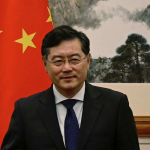Amidst the reopening of theaters packed with moviegoers, lengthy lines of eager diners flocking to restaurants, a resurgence in holiday travel excitement, and an uptick in shopping sprees, China’s consumption sector is experiencing a flourishing period of vitality and this surge is providing a significant boost to the country’s overall economic growth.
According to the latest official data, China’s retail sales of consumer goods rose 5.8 percent year on year to 11.49 trillion yuan (1.67 trillion U.S. dollars) in the first quarter, reversing a decline of 2.7 percent in the final quarter of last year.
In March alone, retail sales jumped 10.6 percent year on year, up 7.1 percentage points from the Jan.-Feb. period. This is the first time since July 2021 that the pace logged double-digit growth, according to the National Bureau of Statistics (NBS).
“Consumption growth has picked up significantly in the first quarter as COVID-triggered restrictions on consumption gradually waned and pro-consumption policies paid off,” said NBS spokesperson Fu Linghui.
He added that consumption is playing an increasingly prominent role in driving economic development, contributing to 66.6 percent of China’s growth in the first quarter, which is a remarkable improvement from last year.
The consumption of catering, entertainment and tourism grew rapidly in the first quarter with the revenue of China’s catering sector increasing by 13.9 percent from a year ago.
Commodity sales also improved during the period. Besides a continued increase in the sales of grain, oil and food, sales of consumption-upgrading goods like jewelry and cosmetics expanded quickly, NBS data showed.
Retail sales at brick-and-mortar stores went up significantly, and online retail sales maintained steady growth, indicating rising consumer confidence, Fu said.
Since the beginning of this year, overall consumption has shown recovery momentum thanks to a range of supportive measures rolled out nationwide, including launching consumption promotion festivals and issuing vouchers for automobile purchases.
At present, solid efforts are needed to increase people’s income to further enhance their consumer confidence and capabilities, while combining consumption expansion with supply-side structural reform to unleash consumption potential, said Yang Guangpu, a researcher with the Development Research Center of the State Council.
Indeed, expanding consumption has become a policy priority. China’s top economic planner is formulating plans to boost the recovery and expansion of consumption.
“We are working on drafting documents on the recovery and expansion of consumption, mainly focusing on key areas such as stabilizing big-ticket consumption, enhancing service consumption and expanding rural consumption,” Meng Wei, spokesperson for the National Development and Reform Commission, told a press conference on Wednesday.
China will strive to stabilize the spending on cars, accelerate the construction of charging piles and urban parking facilities, promote new energy vehicles in rural areas and encourage automobile companies to develop models suitable for use in rural areas.
Meng added that more efforts will also be made to help increase the income of urban and rural residents, ensure the supply and stable prices of basic consumer goods, and foster a favorable environment to improve consumer sentiment.
Chinese businesses have posted a strong rebound in sales revenue since the beginning of this year in the latest signal of an improving economy.
Wang Jun, head of the State Taxation Administration, told a press conference Thursday that the combined sales revenue of businesses nationwide gained 4.7 percent year on year in the first three months of 2023 and logged an increase of 6.2 percentage points in comparison with the fourth quarter last year.
Growth momentum became more palpable in March, with sales revenue up 12.8 percent from a year ago, Wang said.
The January-March data confirmed a reverse of the long losing streak in Chinese businesses’ sales revenue starting July last year, and added to evidence that the country’s economic recovery is steady and ongoing.
Business confidence also strengthened as the value of business purchases increased 14.1 percent year on year in March, up significantly from 1.3 percent in January-February, Wang said.
In the first quarter of this year, more than 3.43 million tax-related business entities were newly established nationwide, up 7.2 percent year on year, according to Wang.

Meanwhile, service industries such as accommodation and catering, cultural and sports entertainment, and residential services rebounded significantly, with sales revenue increasing by 22.8 percent, 13.7 percent and 9.4 percent, respectively, year on year.
Retail sales of goods recovered steadily and rapidly, with revenue increasing by 11.6 percent year on year, 3.4 percentage points faster than last year, Wang added.
In March, the sales revenue of high-tech industry increased by 15.6 percent year on year, 5.7 percentage points faster than the growth rate last year, said Wang.
China’s services trade value continued to expand in the first two months of 2023, data from the Ministry of Commerce showed Thursday.
The total trade value stood at about 969.6 billion yuan (about 141 billion U.S. dollars) in the January-February period, rising 1.7 percent year on year, according to the ministry.
Imports of services climbed 14.7 percent year on year to 557.3 billion yuan in the period, while exports of services totaled over 412.3 billion yuan, down 11.8 percent from a year ago, resulting in a deficit of 144.9 billion yuan.
Trade in knowledge-intensive services reached nearly 406.9 billion yuan in the January-February period, expanding 6.4 percent year on year, the data showed.
Travel services saw notable recovery during the period, with trade in this sector advancing 39.8 percent from a year earlier to over 209.4 billion yuan, according to the ministry.








